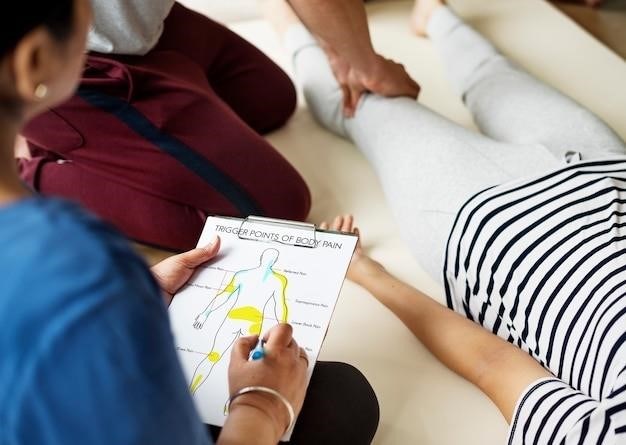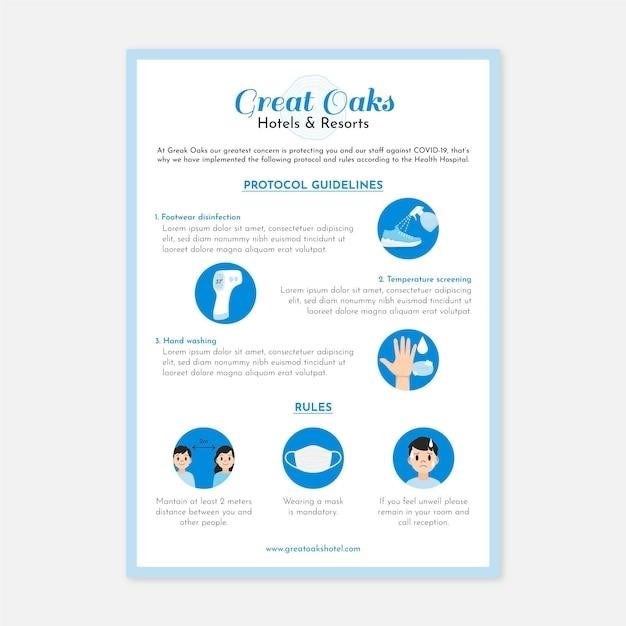
patient assessment practice scenarios pdf
Patient Assessment Practice Scenarios⁚ A Guide for EMS Students
Patient assessment practice scenarios provide a valuable tool for EMS students, allowing them to refine their understanding of the patient assessment process. These scenarios offer a simulated environment where students can practice their skills in a safe and controlled setting. The use of scenarios enables students to apply their knowledge in a practical context, enhancing their preparedness for real-life situations. These scenarios often involve scripted interactions with simulated patients, creating a realistic experience that helps students develop their critical thinking, decision-making, and communication skills.
Introduction
In the dynamic and demanding field of Emergency Medical Services (EMS), patient assessment is a fundamental skill that forms the cornerstone of effective pre-hospital care. It is the process by which EMTs and paramedics gather crucial information about a patient’s condition, allowing them to make informed decisions regarding treatment and transport. Mastering this skill is paramount for EMS professionals, as it directly impacts the quality of care provided and ultimately influences patient outcomes.

However, patient assessment is often a complex and challenging subject for EMS students. The theoretical knowledge they acquire in the classroom needs to be translated into practical skills, requiring extensive practice and real-world application. Traditional classroom settings, while valuable for foundational understanding, often fall short in providing sufficient opportunities for hands-on experience. This is where patient assessment practice scenarios come into play, offering a solution to bridge the gap between theory and practice.
Patient assessment practice scenarios are simulated situations designed to mimic real-life emergencies. They provide EMS students with a controlled environment to practice their assessment skills, refine their decision-making processes, and gain confidence in their abilities. These scenarios typically involve scripted interactions with simulated patients, allowing students to apply their knowledge in a practical setting, while receiving feedback and guidance from instructors.
Importance of Patient Assessment Practice
Patient assessment practice is crucial for EMS students for several reasons. Firstly, it allows them to develop a strong foundation in the essential skills required for effective pre-hospital care. By engaging in practice scenarios, students can solidify their understanding of the patient assessment process, including the collection of vital signs, the identification of symptoms, and the interpretation of medical history.
Secondly, practice scenarios provide a safe and controlled environment for students to learn from their mistakes. In real-life emergencies, errors can have serious consequences. However, in a simulated setting, students can experiment with different assessment techniques and decision-making strategies without the risk of harming a patient. This allows them to identify areas where they need improvement and to develop their critical thinking skills.
Thirdly, practice scenarios foster confidence in EMS students. As they gain experience through repeated practice, they become more comfortable and proficient in their assessment abilities. This confidence is essential for effective patient care, as it allows EMTs and paramedics to approach emergencies with a calm and collected demeanor, ensuring they provide the best possible care to their patients.
Benefits of Using Scenarios
The use of scenarios in patient assessment practice offers numerous benefits for EMS students. Scenarios allow for a controlled environment where students can practice their skills without the pressure of a real-life emergency. This controlled setting allows for the repetition and refinement of essential assessment techniques, leading to increased proficiency and confidence. The standardized nature of scenarios also allows instructors to assess student performance objectively, providing valuable feedback and identifying areas for improvement.
Scenarios can be tailored to simulate a wide range of medical and trauma situations, exposing students to diverse patient presentations; This exposure helps them develop critical thinking skills and learn to apply their knowledge to different contexts. Scenarios can also incorporate various challenges, such as limited resources, communication barriers, or time constraints, further enhancing the realism of the training experience.
Moreover, scenarios promote teamwork and collaboration among EMS students. By working together to assess and manage simulated patients, students can develop their communication and leadership skills. This teamwork experience is crucial for real-life situations where seamless coordination and communication are essential for patient safety.

Types of Patient Assessment Scenarios
Patient assessment practice scenarios encompass a wide range of situations, each designed to test different aspects of the EMS assessment process. These scenarios can be broadly categorized into two main types⁚ trauma scenarios and medical scenarios. Trauma scenarios focus on injuries sustained due to accidents, falls, or other external forces. These scenarios often involve simulating injuries such as fractures, lacerations, and internal bleeding, requiring students to prioritize life-saving interventions and manage potential shock.
Medical scenarios, on the other hand, simulate illnesses and medical conditions, such as cardiac emergencies, respiratory distress, diabetic emergencies, and neurological events. These scenarios challenge students to identify the underlying medical cause, interpret vital signs, and administer appropriate treatments based on the patient’s symptoms and history. By presenting a diverse range of scenarios, including both trauma and medical cases, students can gain a comprehensive understanding of the patient assessment process and develop the skills necessary to respond effectively to various emergencies.
In addition to these two main categories, scenarios can also be designed to address specific aspects of the assessment process, such as scene size-up, primary assessment, secondary assessment, or medication administration. This allows students to focus on particular areas of their practice and improve their proficiency in specific skills. By incorporating a variety of scenarios, EMS training programs can provide a comprehensive and engaging experience for students, preparing them for the challenges they may face in the field.
Trauma Scenarios
Trauma scenarios are designed to simulate situations involving injuries caused by accidents, falls, or other external forces. These scenarios play a crucial role in EMS training by exposing students to the realities of dealing with trauma patients. Trauma scenarios often involve simulating injuries such as fractures, lacerations, internal bleeding, and head injuries. These scenarios require students to prioritize life-saving interventions, manage potential shock, and effectively control bleeding. By simulating these high-pressure situations, students gain valuable experience in rapid assessment, decision-making, and the application of advanced trauma life support (ATLS) principles.
One common example of a trauma scenario involves a simulated car accident. Students are presented with a scenario where a patient has sustained multiple injuries following a collision. They must assess the scene for safety hazards, prioritize patient care based on the severity of injuries, and implement appropriate treatment protocols. These scenarios can involve multiple patients, further increasing the complexity and challenging students to effectively manage multiple injuries and prioritize treatment.
Trauma scenarios are essential for developing the skills and knowledge necessary to handle trauma emergencies effectively. They provide students with a safe and controlled environment to practice their skills, build confidence, and refine their understanding of trauma management. By engaging in these scenarios, EMS students are better prepared to face the challenges of real-life trauma situations.
Medical Scenarios
Medical scenarios focus on simulating medical emergencies, ranging from common illnesses to life-threatening conditions. These scenarios are vital for EMS students as they provide opportunities to practice assessing and managing patients with a wide range of medical complaints. Medical scenarios often involve simulating conditions such as chest pain, shortness of breath, altered mental status, diabetic emergencies, and allergic reactions. These scenarios challenge students to identify the underlying medical issues, prioritize patient care, and administer appropriate interventions based on their knowledge of medical protocols.
An example of a medical scenario might involve a simulated patient experiencing a heart attack. Students are presented with a patient exhibiting classic symptoms of chest pain, shortness of breath, and diaphoresis. They must conduct a thorough patient assessment, including taking vital signs, obtaining a medical history, and performing a focused physical exam. Based on their findings, students must make crucial decisions regarding treatment, such as administering oxygen, nitroglycerin, or aspirin, and preparing for transport to a hospital.
Medical scenarios are essential for developing the skills and knowledge necessary to effectively manage medical emergencies. They provide students with a controlled environment to practice their diagnostic skills, apply medical protocols, and make sound clinical decisions. Through these scenarios, EMS students gain confidence in their ability to respond to real-life medical emergencies.
Key Elements of Patient Assessment Scenarios
Effective patient assessment scenarios incorporate various key elements to enhance the learning experience for EMS students. These elements contribute to a realistic and engaging simulation, allowing students to practice their skills in a safe and controlled environment. The core elements often include a clear and detailed scenario description, a simulated patient with realistic symptoms and behaviors, and a structured assessment process that guides students through the steps of patient evaluation.
Scenario descriptions should provide comprehensive information about the simulated patient’s condition, including their chief complaint, medical history, vital signs, and any relevant medications. The description should also outline the patient’s level of consciousness, pain, and any other pertinent details. A well-developed scenario description ensures students have a clear understanding of the situation and can make informed decisions based on the available information.
Simulated patients play a crucial role in patient assessment scenarios. These patients, often played by actors or trained volunteers, should be able to portray realistic symptoms, behaviors, and responses. Their ability to mimic the patient’s condition adds authenticity to the scenario, challenging students to assess and manage the patient effectively. The interaction between the student and the simulated patient creates a dynamic learning experience, encouraging students to practice their communication and interpersonal skills.
Resources for Patient Assessment Practice Scenarios
EMS students have access to a variety of resources that provide patient assessment practice scenarios, enabling them to hone their skills and prepare for real-life situations. These resources include textbooks, online platforms, and specialized simulation centers. Textbooks dedicated to EMS training often include chapters or sections devoted to patient assessment scenarios, providing students with case studies and practice exercises. These scenarios typically present various patient presentations, allowing students to apply their knowledge and develop their critical thinking skills.
Online platforms are increasingly becoming popular resources for patient assessment practice scenarios. These platforms offer a wide range of scenarios, often categorized by specific medical conditions or trauma types. Many platforms provide interactive simulations, allowing students to make decisions and receive feedback on their performance. This interactive approach enhances the learning experience, providing students with immediate feedback and allowing them to identify areas for improvement.
Specialized simulation centers offer a highly immersive and realistic learning environment for EMS students. These centers are equipped with advanced simulation mannequins that can mimic various medical conditions and physiological responses. Students can practice their assessment skills in a controlled setting, receiving feedback from instructors and learning from their mistakes in a safe environment. Simulation centers often provide a variety of scenarios, ranging from simple medical emergencies to complex trauma cases, enabling students to develop their skills across a wide range of patient presentations.
Patient assessment practice scenarios play a crucial role in preparing EMS students for the demands of the profession. By immersing students in realistic simulations, these scenarios foster a deep understanding of the patient assessment process, enabling them to develop essential skills such as critical thinking, decision-making, and communication. Through these scenarios, students gain confidence in their abilities and are better equipped to handle real-life emergencies. The availability of diverse resources, including textbooks, online platforms, and simulation centers, provides students with ample opportunities to practice their skills and enhance their knowledge.
Patient assessment practice scenarios are not merely an academic exercise; they are an integral part of the learning journey for aspiring EMS professionals. By engaging in these simulations, students gain the experience and confidence necessary to provide effective and compassionate care to patients in need. As they progress through their training, they will find that the skills honed through patient assessment practice scenarios will become invaluable assets in their professional lives.
Comments (0)